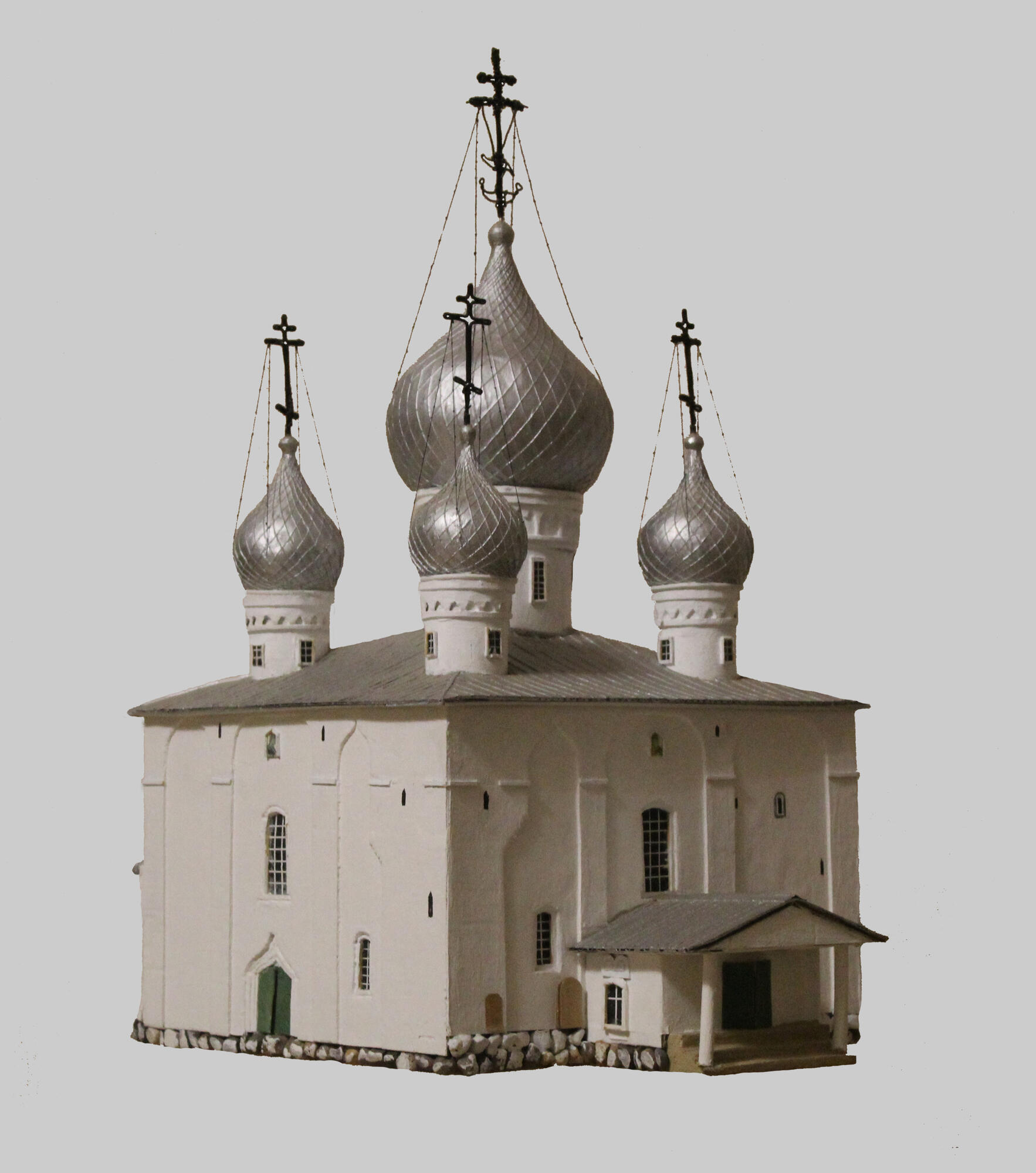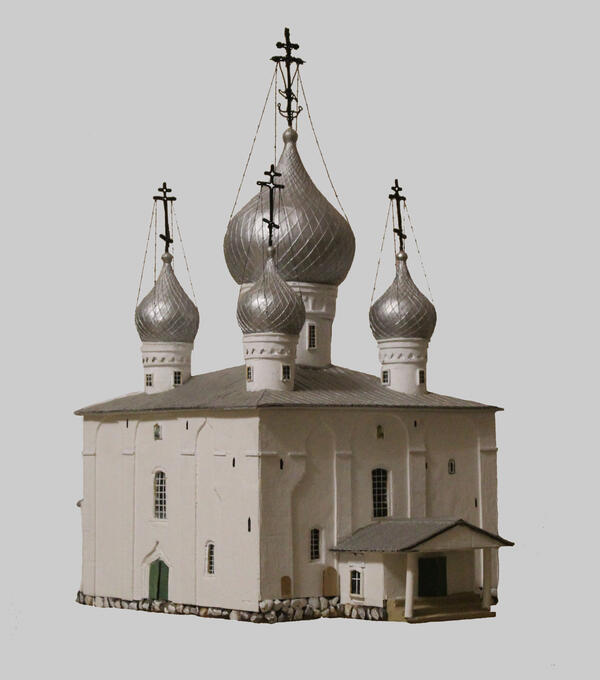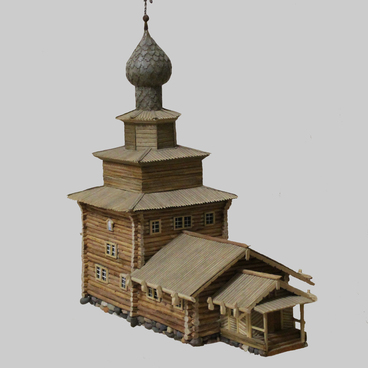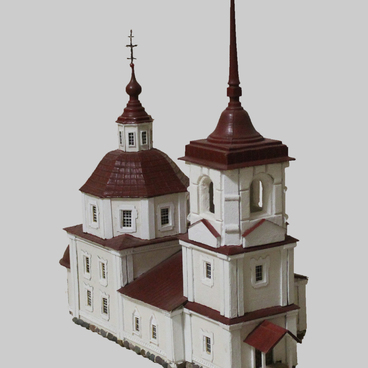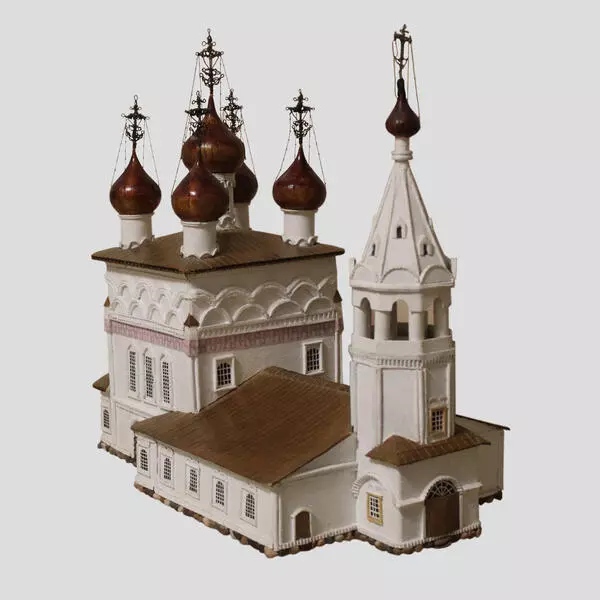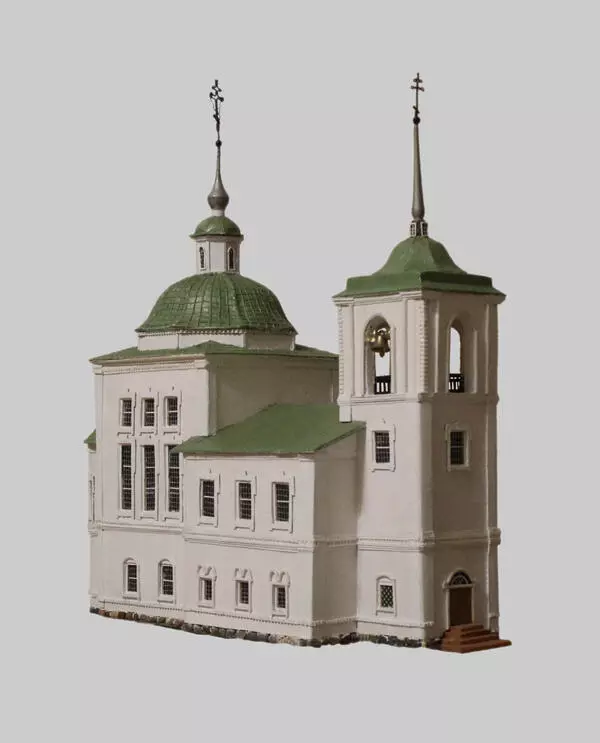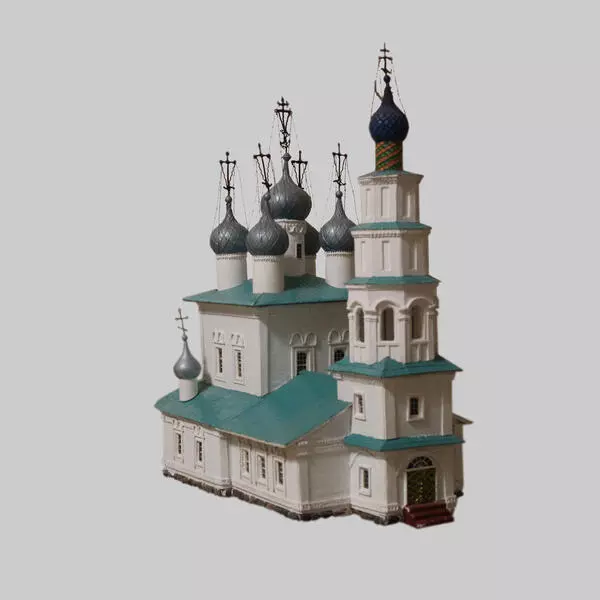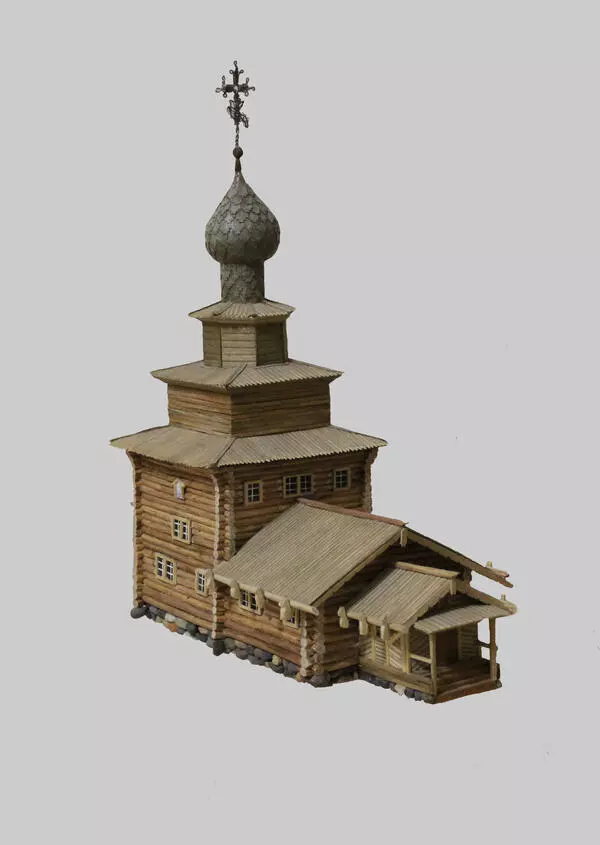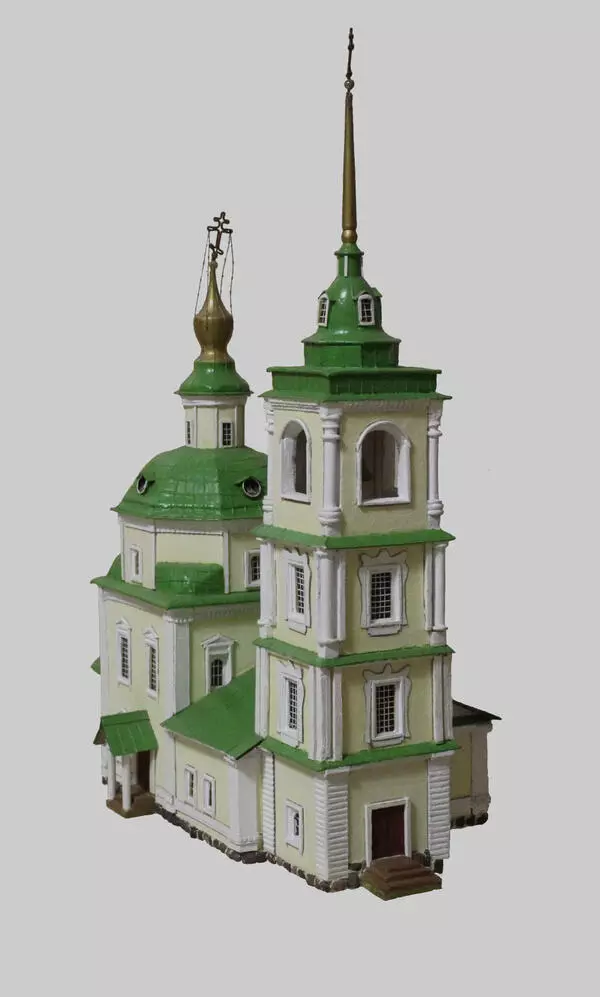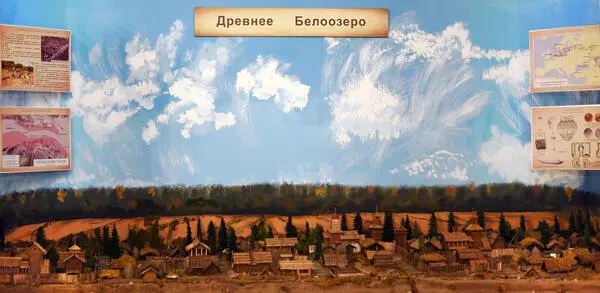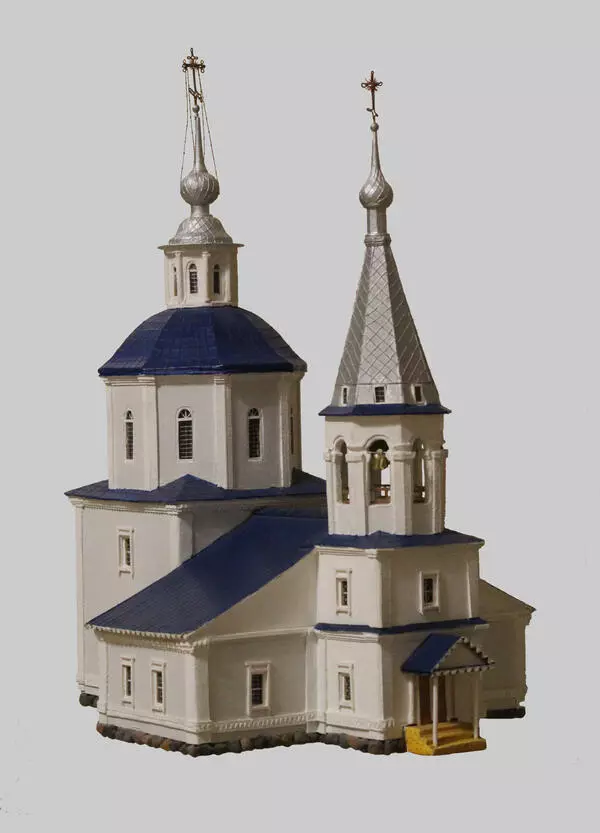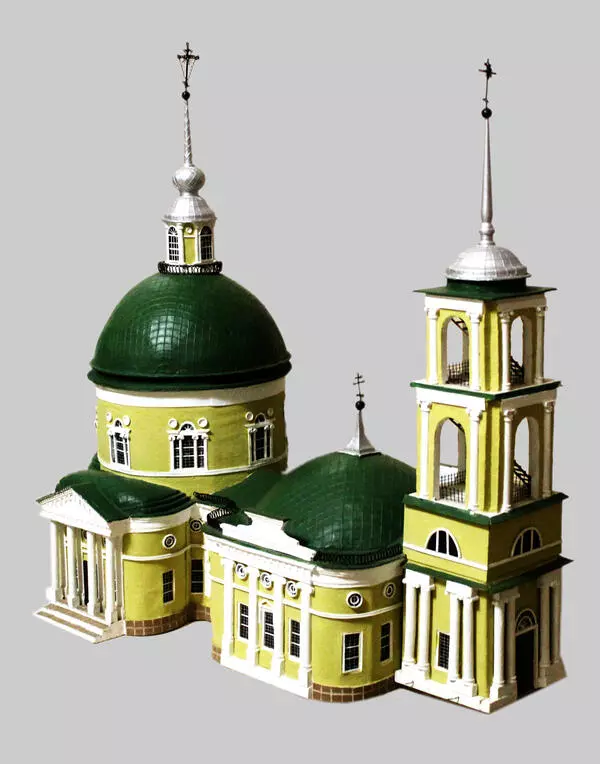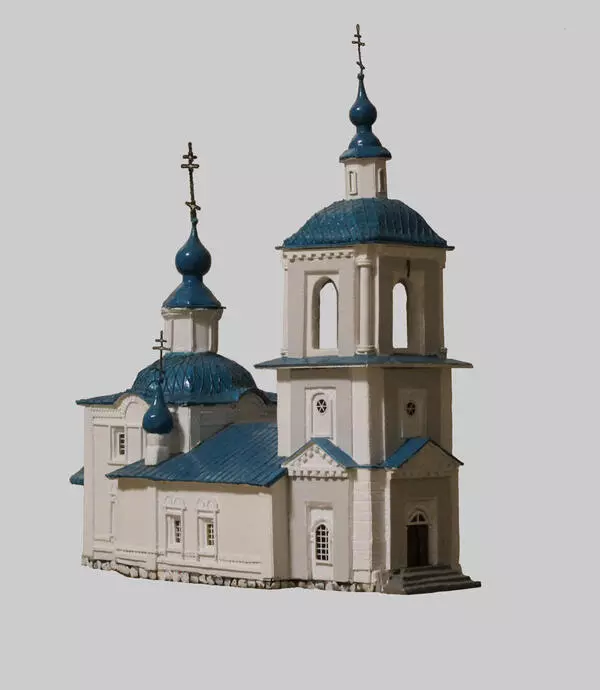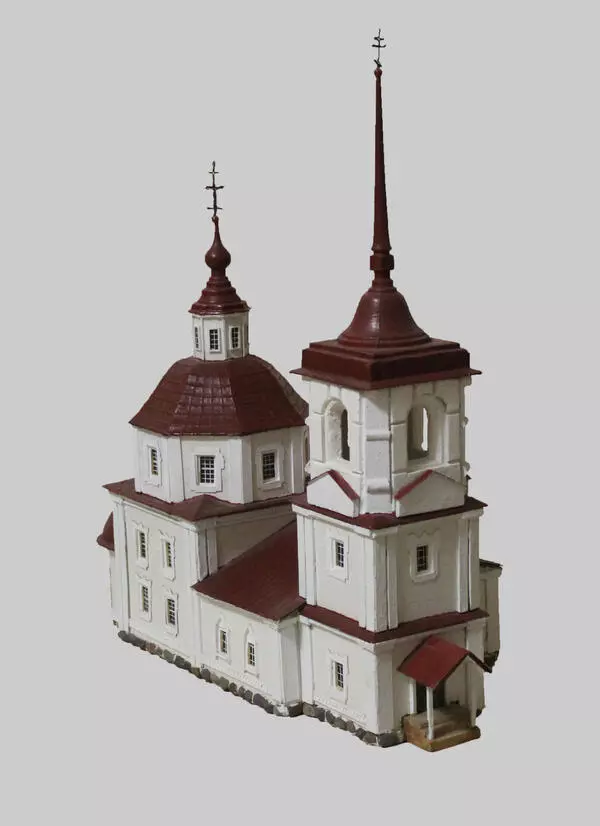The wooden Assumption Church was erected in 1398. Over time it became dilapidated and was no longer able to accommodate all parishioners. It was decided to rebuild the church. The new building, also wooden, burned down during a fire between 1462 and 1497. The stone temple preserved till current times has been erected by the decree of Ivan the Terrible, and a contract for the construction of the temple has been preserved. The architects were from Rostov. Their names were GoryaIn GrigOriev TsarYOv and TretiAk BorIsov RostOvka. The construction of the temple cost 90 rubles.
In the northwestern corner of the temple a bell tower with clocks was constructed. The interior staircase in the north-western wall led to the clock chamber located under the cathedral vaults. In the floor of the chamber there is a small hole for lowering the weights of the clock, which turns into a stone well that almost reaches the ground. The sentry chamber is blocked by a vault, above which the bell chamber was towering with four massive pillars. The clock chamber is often confused with the ‘stylit cell’.
In the Time of Trouble, the Assumption Church was devastated and desecrated: horses were kept there and fires were made. A legend tells that this was evidenced by a horseshoe mark on the temple Icon of Tikhvin Mother of God and a charred wooden beam sticking out of the wall under the ceiling in the altar.
An extract from the Belozersk cadastres of the 1670s states: ‘A stone church in the suburb, has five heads in the name Assumption, with side-altars: Alexei Metropolitan side-altar, another in the name of the Entrance to Jerusalem of the Lord and our Saviour Jesus Christ; the church is crowned by heads covered by wooden scale; the church is covered by flat plunks’. One of the side-altars of the temple is located in the south-western part of the temple, and can be reached by an internal staircase through a door in the south wall. The presence of this chapel in the temple provided the basis for the legends about distinguished prisoners, including Ksenia Godunova.
The Assumption Temple is cold, unheated. The services here took place only in the warm time of day. At the end of the 18th century, a warm (winter) stone temple in the name of the Epiphany of the Lord was built next to it in place of the wooden one. They form a single architectural ensemble. At the same time, the temple was rebuilt. A lobby was added – an annex in front of the entrance to the temple, the roof was converted into a four-slope roof, the heads were given an onion form and iron coating, as well as crowned with wrought crosses. A new baroque iconostasis has been created, on which many old icons have been affixed. This iconostasis with carving and molding has survived to the present day.
In 2012, restoration work was done on the roof and facades of the temple. It is now an operating summer temple.
In the northwestern corner of the temple a bell tower with clocks was constructed. The interior staircase in the north-western wall led to the clock chamber located under the cathedral vaults. In the floor of the chamber there is a small hole for lowering the weights of the clock, which turns into a stone well that almost reaches the ground. The sentry chamber is blocked by a vault, above which the bell chamber was towering with four massive pillars. The clock chamber is often confused with the ‘stylit cell’.
In the Time of Trouble, the Assumption Church was devastated and desecrated: horses were kept there and fires were made. A legend tells that this was evidenced by a horseshoe mark on the temple Icon of Tikhvin Mother of God and a charred wooden beam sticking out of the wall under the ceiling in the altar.
An extract from the Belozersk cadastres of the 1670s states: ‘A stone church in the suburb, has five heads in the name Assumption, with side-altars: Alexei Metropolitan side-altar, another in the name of the Entrance to Jerusalem of the Lord and our Saviour Jesus Christ; the church is crowned by heads covered by wooden scale; the church is covered by flat plunks’. One of the side-altars of the temple is located in the south-western part of the temple, and can be reached by an internal staircase through a door in the south wall. The presence of this chapel in the temple provided the basis for the legends about distinguished prisoners, including Ksenia Godunova.
The Assumption Temple is cold, unheated. The services here took place only in the warm time of day. At the end of the 18th century, a warm (winter) stone temple in the name of the Epiphany of the Lord was built next to it in place of the wooden one. They form a single architectural ensemble. At the same time, the temple was rebuilt. A lobby was added – an annex in front of the entrance to the temple, the roof was converted into a four-slope roof, the heads were given an onion form and iron coating, as well as crowned with wrought crosses. A new baroque iconostasis has been created, on which many old icons have been affixed. This iconostasis with carving and molding has survived to the present day.
In 2012, restoration work was done on the roof and facades of the temple. It is now an operating summer temple.
